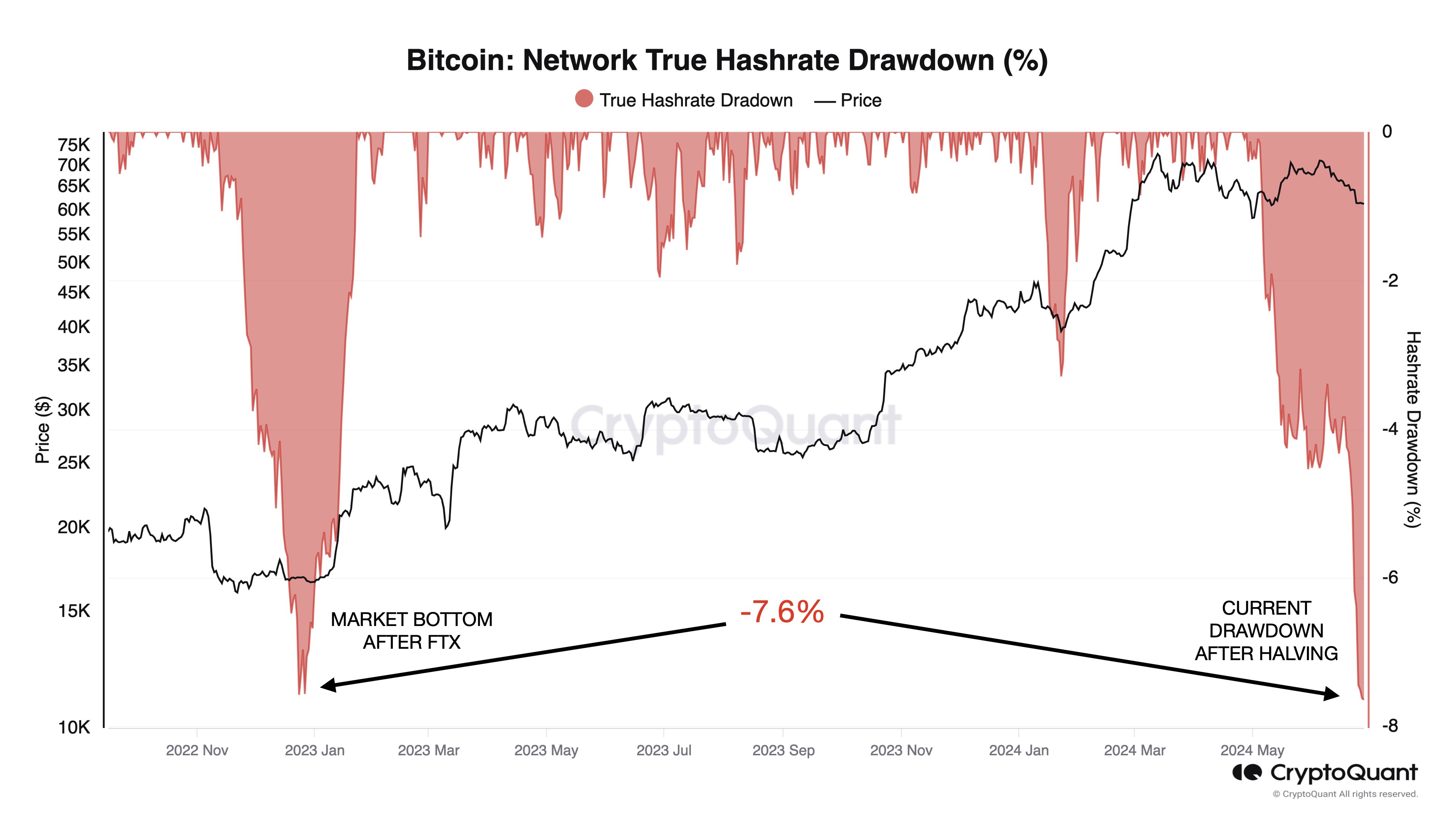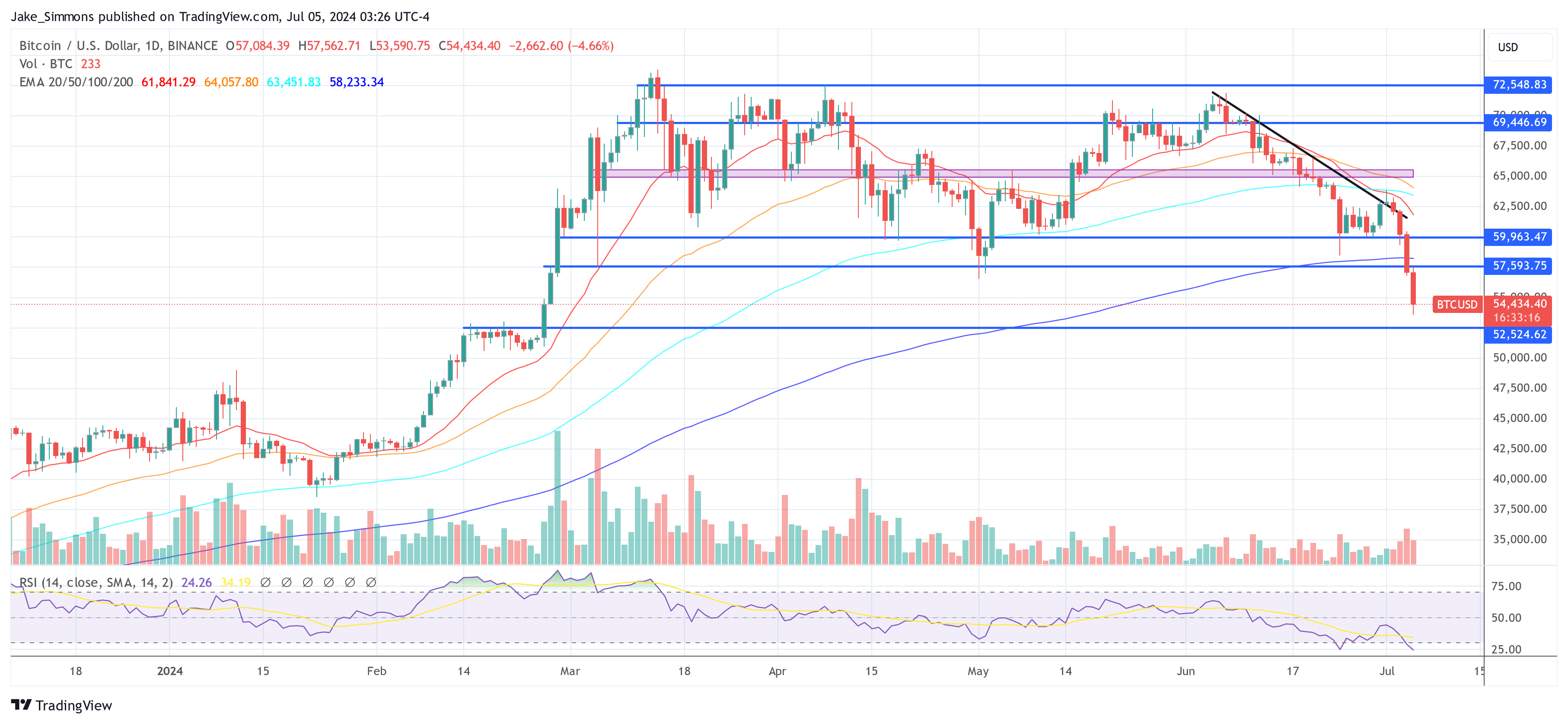In the last four days, the Bitcoin price has fallen by more than 15%, with a significant drop of 7.8% in the last 24 hours. From a high of almost $72,000 in early June, the price of BTC has now fallen by almost 25%. These are the main factors behind yesterday’s dramatic price drop.
#1 Bitcoin Refunds from Mount Gox
The upcoming distribution of 142,000 BTC by the defunct crypto exchange Mt. Gox has significantly fueled the market turmoil. This amount, which represents 0.68% of the total Bitcoin supply, will be distributed among the creditors of the exchange, which was shut down in 2014 due to a major hacking event.
The distribution process has already seen large transfers, with 52,633 BTC moved in the last few hours, indicating that preparations are being made for a large-scale payout. Market observers and analysts are watching these moves closely as the potential for massive selling by these creditors could cause significant volatility in the market.
The psychological impact of this distribution has likely led to pre-emptive selling among Bitcoin holders, further amplifying the market jitters.

#2 German government
The German government’s decision to begin liquidating its Bitcoin holdings has also caused unrest in the market, with transactions recorded on major exchanges such as Bitstamp, Coinbase and Kraken.
Related reading
In fourteen days, the government reduced its holdings from 50,000 BTC to 42,274 BTC. Market participants are understandably nervous that a continued sell-off by a major holder like a government could lead to downward price pressure.
#3 Massive long liquidations
The Bitcoin market has experienced a sharp increase in the liquidation of long positions, with a record $212 million worth of BTC liquidated in the past 48 hours. This liquidation is the most significant since April 13, when $261 million worth of BTC longs were liquidated, leading to a sharp drop in Bitcoin’s price from $68,500 to $61,600.

Such liquidations often cause a chain reaction, leading to forced sell-offs and further price declines. These liquidations are indicative of a highly leveraged market, where investors may become overextended, contributing to greater market volatility.
#4 Capitulation of BTC miners
Following Bitcoin’s halving on April 20, 2024, the mining reward was halved from 6.25 to 3.125 BTC, escalating economic pressure on miners. This reward cut was expected to increase Bitcoin’s price, but the increase did not materialize, leaving miners with diminishing returns.
Related reading
The current capitulation among miners resembles previous market bottoms, such as the one following the FTX collapse, CryptoQuant researchers recently revealed. Indicators of trouble among miners, including a significant drop in hashrate of 7.7% and a decline in mining revenue per hash to near all-time lows, mean that many miners were forced to turn off their equipment and drain the BTC supply to sell.

#5 Slowdown in US Bitcoin ETF Activity
Contrary to expectations of a booming market driven by institutional investment through spot Bitcoin ETFs, there has been a noticeable slowdown in this sector. The expected “second wave” of institutional money has so far failed to materialize, leading to subdued activity in the ETF space. Instead, spot ETFs are currently experiencing a summer lull.
The enthusiasm surrounding Bitcoin ETFs has not been able to counter the overwhelmingly negative market sentiment; however, its direct impact remains relatively small. Leading on-chain analyst James “Checkmate” Check recently estimated that only 20% of spot volume can be attributed to spot ETFs, with the rest coming from traditional spot markets. In recent weeks, long-term holders of BTC have been selling their holdings in large numbers, which has been the main driver of the downward pressure on the market.
At the time of writing, BTC was trading at $54,434.

Featured image created with DALL·E, chart from TradingView.com

